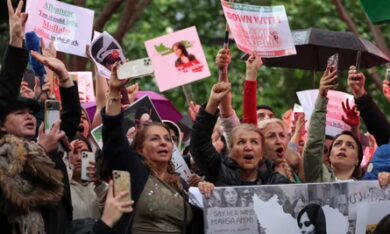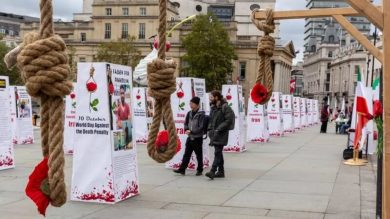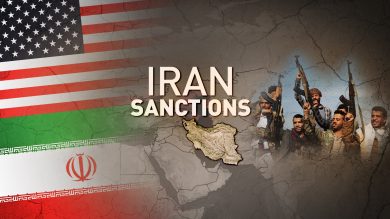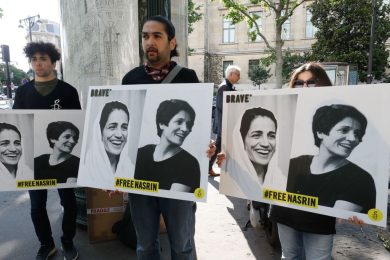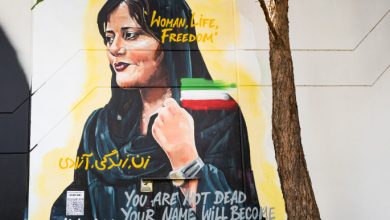In a country where freedom of expression is restricted and gender oppression is institutionalized, Iranian women have emerged as the bravest voices of resistance. Their struggle is not just for their rights but for the soul of a nation that has long been dominated by the Islamic Revolutionary Guard Corps (IRGC)—the regime’s most powerful force of suppression.
The IRGC, designated by the United States as a Foreign Terrorist Organization (FTO), plays a central role in enforcing gender-based oppression in Iran. From mandatory hijab laws to violent crackdowns on peaceful protests, the IRGC uses fear, violence, and surveillance to control women’s lives. Despite this, Iranian women continue to resist, often at great personal risk, displaying a level of courage that has captivated the world.
This article highlights the stories of extraordinary Iranian women who have defied the IRGC’s oppression, standing as symbols of bravery and inspiration for those fighting for freedom and justice worldwide.
1. The IRGC’s Role in Oppressing Women
A. Enforcing the Mandatory Hijab
Since the 1979 Islamic Revolution, Iranian women have been subjected to strict dress codes and gender segregation laws. The IRGC, alongside the morality police and the Basij militia, enforces these regulations by:
• Arresting women for “improper hijab.”
• Imposing fines, beatings, and prison sentences for noncompliance.
• Surveilling public spaces to ensure gender segregation and modesty laws are followed.
The hijab, under this regime, is not just a religious symbol—it has become a political tool to enforce state control over women’s bodies.
B. Cracking Down on Protests
The IRGC is notorious for its violent suppression of protests. When women lead protests against gender inequality, the IRGC responds with:
• Live ammunition against peaceful demonstrators.
• Mass arrests and torture in IRGC-run prisons.
• Internet shutdowns to prevent the spread of protest footage.
C. Silencing Activists
Prominent women’s rights activists have been jailed, tortured, and exiled for defying the IRGC’s rules. These brave women, however, continue their fight for freedom, refusing to be silenced.
2. Stories of Courage: Women Who Defied the IRGC
A. Mahsa Amini: The Spark of a Revolution
In September 2022, Mahsa Amini, a 22-year-old Kurdish woman, was arrested by the morality police for allegedly wearing her hijab improperly. Days later, she died in IRGC custody, sparking nationwide protests.
• The slogan “Women, Life, Freedom” (Zan, Zendegi, Azadi) became the rallying cry for the movement.
• Women led protests, removing their hijabs in public, defying the regime.
• Despite the IRGC’s brutal response, Mahsa’s death continues to inspire a global movement demanding justice and equality.
B. Narges Mohammadi: Voice from Prison
Narges Mohammadi, a human rights activist and Nobel Peace Prize laureate, has spent years in IRGC-run prisons for her advocacy.
• She campaigns against the death penalty and gender-based oppression in Iran.
• Even from prison, Narges has written letters detailing torture and abuse within the Iranian prison system.
• Her unwavering courage has made her a symbol of defiance against the IRGC’s cruelty.
C. Masih Alinejad: The Digital Warrior
Masih Alinejad, a journalist and women’s rights activist, lives in exile in the United States but continues to challenge the IRGC’s oppression through digital activism.
• She founded the #MyStealthyFreedom campaign, encouraging Iranian women to share photos without hijab.
• The IRGC has attempted to assassinate and kidnap her, yet she remains vocal, amplifying the voices of Iranian women globally.
• Masih uses social media to document human rights abuses, ensuring that the IRGC’s brutality is seen worldwide.
D. Sepideh Qoliyan: Fearless in the Face of Repression
Sepideh Qoliyan, a labor rights activist, has been imprisoned repeatedly for speaking out against the regime.
• After being released from prison, she publicly chanted anti-regime slogans in front of Evin Prison, showing unprecedented bravery.
• Her acts of defiance highlight the role of women in Iran’s broader struggle for social and political freedoms.
3. Everyday Acts of Resistance by Iranian Women
While some stories of defiance have gained international recognition, countless Iranian women resist the IRGC’s oppression daily:
• Removing hijabs in public, risking arrest and imprisonment.
• Dancing and singing in public, activities banned for women.
• Attending protests, knowing they could face violence or death at the hands of the IRGC.
• Posting photos without hijab under hashtags like #WhiteWednesdays, challenging the state’s control over their bodies.
These daily acts of defiance, though often unseen, collectively weaken the IRGC’s control and inspire others to resist.
4. The IRGC’s Response: Brutality and Repression
The IRGC’s reaction to women’s resistance has been ruthless, aiming to instill fear and crush dissent.
A. Mass Arrests and Torture
• Thousands of women and girls have been arrested, many subjected to torture, sexual violence, and forced confessions.
• Prisoners often face psychological abuse, with the IRGC targeting their families to further intimidate them.
B. Executions and Killings
• The IRGC has been implicated in extrajudicial killings, especially during mass protests.
• Young women and teenagers, including Nika Shakarami and Sarina Esmailzadeh, were murdered during protests, becoming symbols of resistance.
C. Digital Suppression
• The IRGC runs cyber surveillance operations, tracking activists, hacking accounts, and imposing internet blackouts during protests.
• Despite these measures, Iranian women continue to defy censorship, finding new ways to organize and resist online.
5. The Role of Social Media in Amplifying Women’s Voices
Social media has become the primary weapon for Iranian women resisting the IRGC.
• Hashtags like #WomenLifeFreedom, #MahsaAmini, and #MyStealthyFreedom have gone viral globally, uniting activists, politicians, and ordinary people.
• Videos of protests, uploaded by women, have exposed the IRGC’s brutality to the world.
• Activists like Masih Alinejad have created online platforms where Iranian women share their stories, bypassing state-controlled media.
Social media not only documents human rights violations but also connects Iranians with the global community, building a network of solidarity that the IRGC cannot control.
6. Global Solidarity: The World’s Role in Supporting Iranian Women
The courage of Iranian women has inspired global movements, but more must be done:
A. Designate the IRGC as a Terrorist Organization
• While the United States has already designated the IRGC as an FTO, other countries, especially in Europe, must follow.
• Such designations would cut off the IRGC’s funding and limit its global influence, weakening its ability to suppress Iranian women.
B. Provide Digital Tools for Activists
• The global tech community should offer VPNs, encrypted communication apps, and satellite internet access to help Iranian women bypass censorship.
C. Amplify Iranian Voices
• Media organizations worldwide must continue highlighting stories of Iranian women.
• International institutions must recognize Iranian women’s contributions to the global struggle for gender equality and human rights.
7. The Future of Iran’s Women-Led Resistance
Despite IRGC oppression, Iranian women have demonstrated that they are unyielding. Their resistance has shown that:
• The mandatory hijab is no longer just a religious symbol—it is a political symbol of oppression that is being rejected nationwide.
• Women’s voices are driving Iran’s push for democracy, proving that gender equality is central to political freedom.
• A generation of young women, armed with digital tools and global support, is prepared to reshape Iran’s future.
Conclusion: The Unstoppable Voices of Courage
The courage of Iranian women in defying the IRGC represents one of the most inspiring movements for freedom and justice in the world today. From Mahsa Amini’s tragic death that sparked a nationwide revolution to the unrelenting activism of women like Narges Mohammadi and Masih Alinejad, these stories highlight a resilience that the IRGC’s brutality cannot crush.
Join Our Newsletter!
Stay informed with the latest updates, news, and ways to take action in the fight for justice and global security. Sign up now to get updates delivered straight to your inbox!

